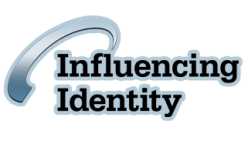In today’s fast paced digital world, mastering email etiquette is essential for effective communication. Whether you are corresponding with colleagues, clients or friends, observing these simple guidelines can greatly enhance your professionalism and clarity. Syndi Seid, renowned etiquette trainer and founder of San Francisco based Advanced Etiquette, offers nine tips to elevate your email game.

Tip 1:
Begin each message with a cordial greeting. A person would never dream of writing a letter or sending a fax without some form of a greeting or header. Why should email be any different. Always begin with something such as, “Dear …;” “Hello,” or at the very least the person’s name, followed by a colon, not a comma (colons are for business/professional correspondence and commas are for social/casual correspondence).
Tip 2:
End each message with a signature and contact information. Always sign your first and last name at the end of each message. Configure an auto signature into your system which will contain all important contact information (including your name, address, telephone and fax numbers, and a repeat of your email address). Think of this as being no different than sending a letter using a sheet of letterhead.
Tip 3: Email Etiquette
Always re-read messages before sending them. Do not transmit messages the moment you write them. Instead, during any one email session, draft all messages and replies; place them in the out box; then re-read each message, use spell check before transmitting the entire group of messages.
Tip 4:
Always make reference to the subject matter about which you are responding. With the multitudes of email messages we get daily, nothing is worse than to receive a cryptic reply, with no opening greeting, no name at the end, no previous message attached, just an, “OK,” “I agree,” “Do it!” attached.
Tip 5: Email Etiquette
Use the copy and paste feature to forward messages rather than as an attachment to the message. Except when messages are within the same known company or group, not everyone on email has the same platform applications and programs, allowing each person to easily open and read files. By taking the few seconds to first copy and paste the message, it will save valuable time and effort in having to retransmit what might have been important information again at a later time.
Tip 6:
Review the trail of previous messages when using the “Reply To” feature to compose new messages. A) Make sure they are still relevant to the current subject listed; B) all unrelated text should be deleted before sending a new message on a new subject; C) always type a new subject line; D) keep only an average of two previous sets of messages attached, as necessary.
Tip 7:
When sending group messages, especially to recipients who all do not even know each other, DO NOT send batch messages using the “To” option. Instead, use the “BCC:” (blind copy option) to send each person the message individually. This way it will avoid: A) everyone seeing your long list of recipients; B) everyone having full access to your valuable and private mailing list – for free; C) unknown and undesired people having access to private information of individuals who may not want it broadcast. Last, do not send replies to the entire group unless specifically instructed. This item is perhaps my biggest pet peeve with email.
Tip 8:
Know your e-pals. Not all systems have the same ability to read the same fonts, indents, bold lettering, centering, italics and the like … results being: A) the recipient might not receive the message at all; B) it may be received without any formatting in one long string of text; C) it may even show a series of extra and unwanted codes and lines. PCs and Macs still don’t communicate well; and some servers, such as Juno, have been strict for email messages, with no graphics or attachments possible.
Tip 9: Email Etiquette
Most importantly, especially when communicating with people in and from other cultures and countries, make sure you do not use any abbreviations, slang and jargon. Always use proper grammar and courteous language in whole, complete sentences. Be sensitive to how the tone of your message may sound and be received by the other person…by being mindful of the particular words you choose to use and write.
BOTTOM LINE
Email is a terrific, quick and easy way to communicate. Nevertheless, we must never forget to use the same care and courtesy in our writings as we would when speaking to someone in person. Happy Practicing!
By Syndi Seid, the world’s leading etiquette trainer, celebrity speaker and founder of San Francisco based Advanced Etiquette.

One thing I think you missed is… if I get or give an email, is there an amount of time that is an acceptable duration, so the person does not think that they are being snubbed or maybe didn’t get the email. As an example, I communicate with my city via email, but they just aren’t responding in a timely manner. They are very poor communicators, so I think they are getting the emails but don’t care to respond…
What a great question, Paul, and thank you for your comment. While we are your NAME TAG EXPERTS (i.e., name tags, badge holder, lanyards, ribbons and more), Syndi Seid has answered this on her blog here: https://www.advancedetiquette.com/communications/8-tips-on-prompt-responding/. Shop our large variety of identification products at http://www.nametag.com.